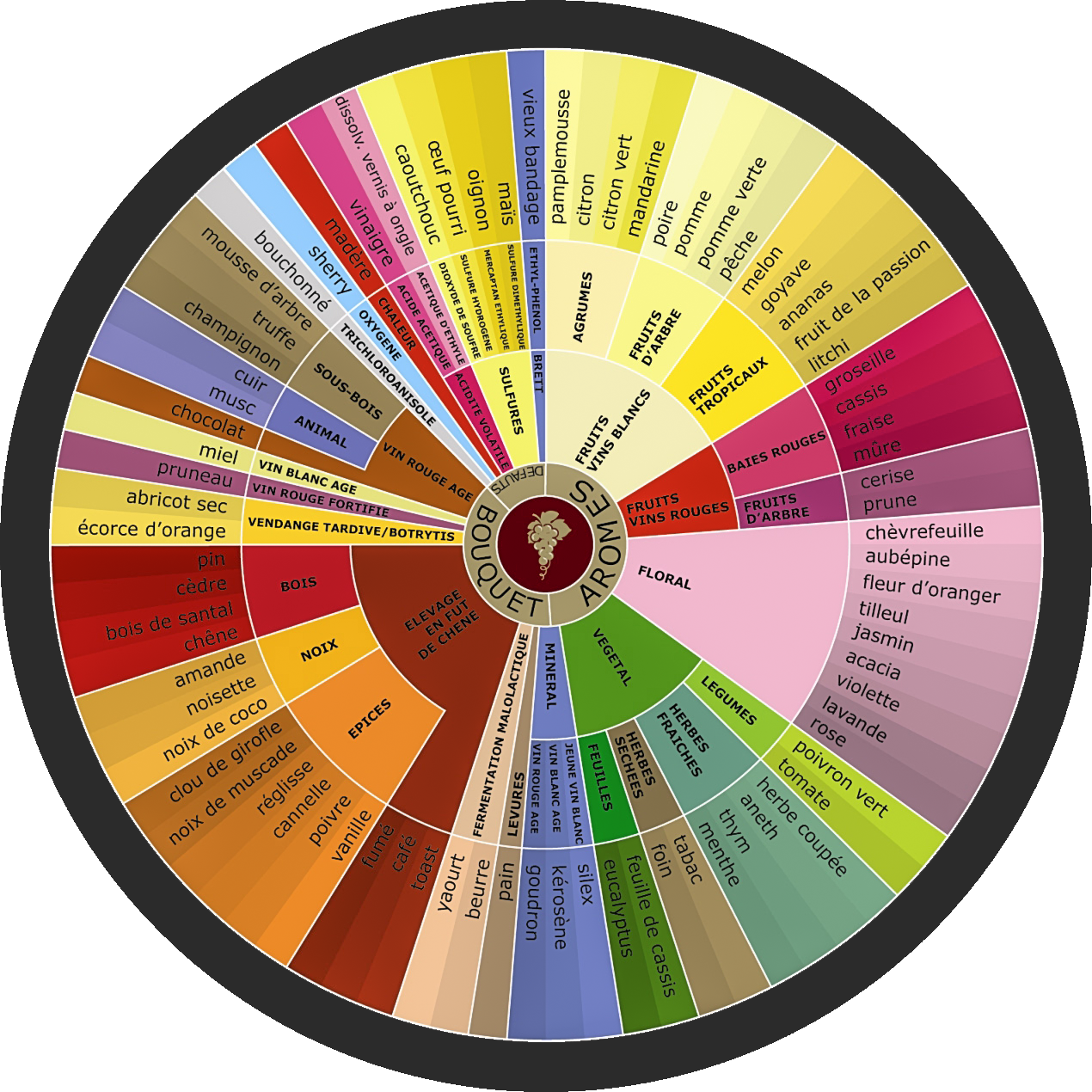White Wines
Green Fruit: This category encompasses flavors and scents of apple, pear, gooseberry, and grape. Examples include Chardonnay wines, known for their apple and pear notes, and Muscat, which exhibits a grape character.
Citrus Fruit: Wines featuring citrus fruit flavors and aromas will present notes of lemon, lime, grapefruit, and orange peel. Common examples include Sauvignon Blanc, Albariño, and Pinot Grigio.
Stone Fruit: Viognier and Riesling are notable for their delightful expressions of peach, apricot, and nectarine fruit characteristics.
Tropical Fruit: Wines with tropical fruit notes may display aromas of mango, banana, lychee, and passionfruit. Gewürztraminer (lychee), Sémillon, Marsanne, and certain Chardonnay wines, depending on climate and malolactic fermentation, are prime examples.
Red Wines
Red Fruit: Varieties like Pinot Noir, Grenache, Gamay, and Sangiovese embody red fruit characteristics such as cherry, raspberry, and strawberry.
Black Fruit: Cabernet Sauvignon, Tempranillo, Merlot, Malbec, and Syrah typically exhibit notes of blackberry, black cherry, blueberry, and blackcurrant, depending on the wine style.
Dried Fruit: Red wines showcasing aromas and flavors of raisins, dates, and prunes are said to have dried fruit character, often developing as the wine ages in the bottle. Utilizing these cluster descriptors can assist in identifying more nuanced fruit aromas and flavors in a wine, aiding in the refinement of one's palate over time.
For instance, if you detect black cherry notes in a California Cabernet, you may explore for additional black fruit characteristics like black currant and blackberry, which are often present. However, not all wines fit neatly into one of these seven categories. Some may exhibit a combination of two or more categories, while others may feature notes from a specific cluster but not all of them. For instance, a New Zealand Sauvignon Blanc is likely to boast citrus fruit aromas like grapefruit and lime zest, but orange peel notes may be harder to discern in these wines.
Additionally, fruit is just one primary characteristic that can be identified in wine. Other significant elements include spice, floral, vegetal, herbaceous, and terroir-driven components. Furthermore, secondary characteristics resulting from the winemaking process and aging, as well as tertiary aromas and flavors that develop with bottle aging, contribute to the overall wine experience. Ultimately, understanding and identifying fruit aromas and flavors serve as a foundational entry point for exploring and appreciating the diverse world of wine.

